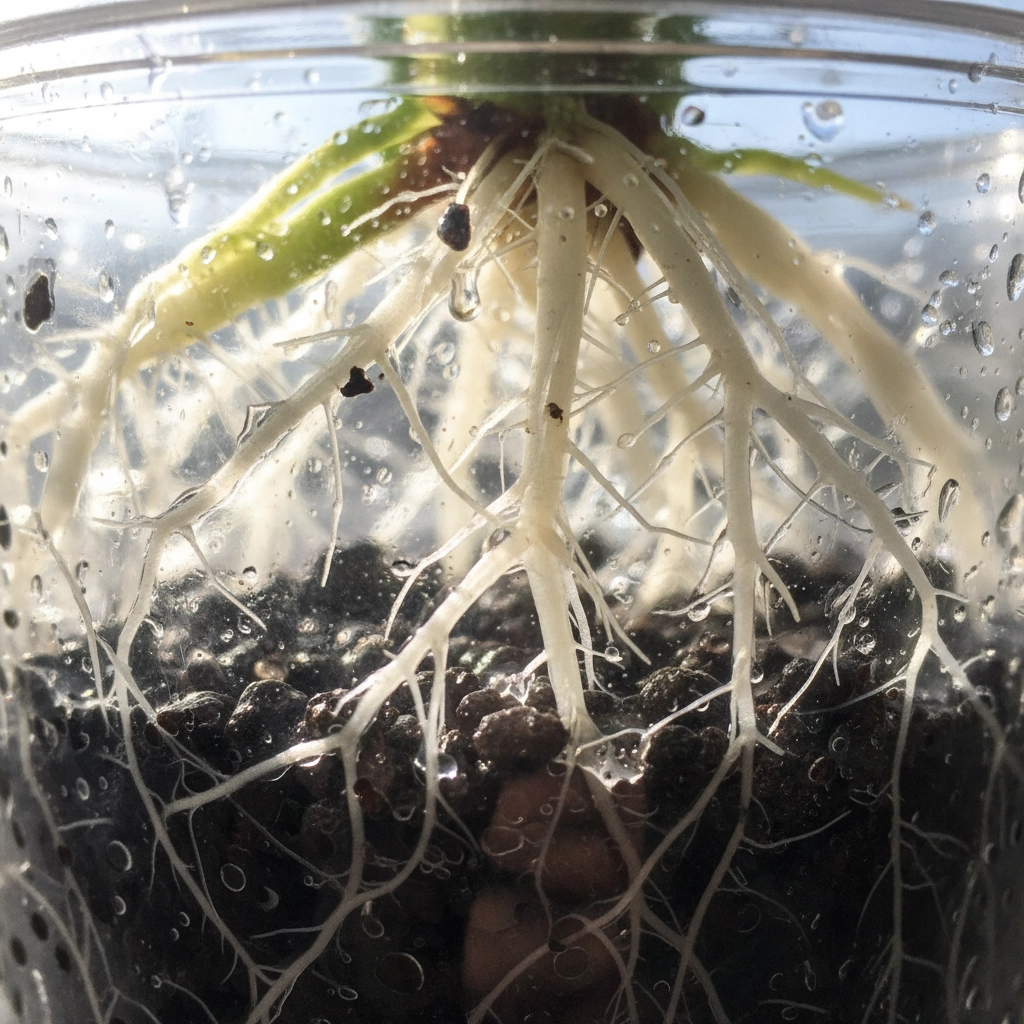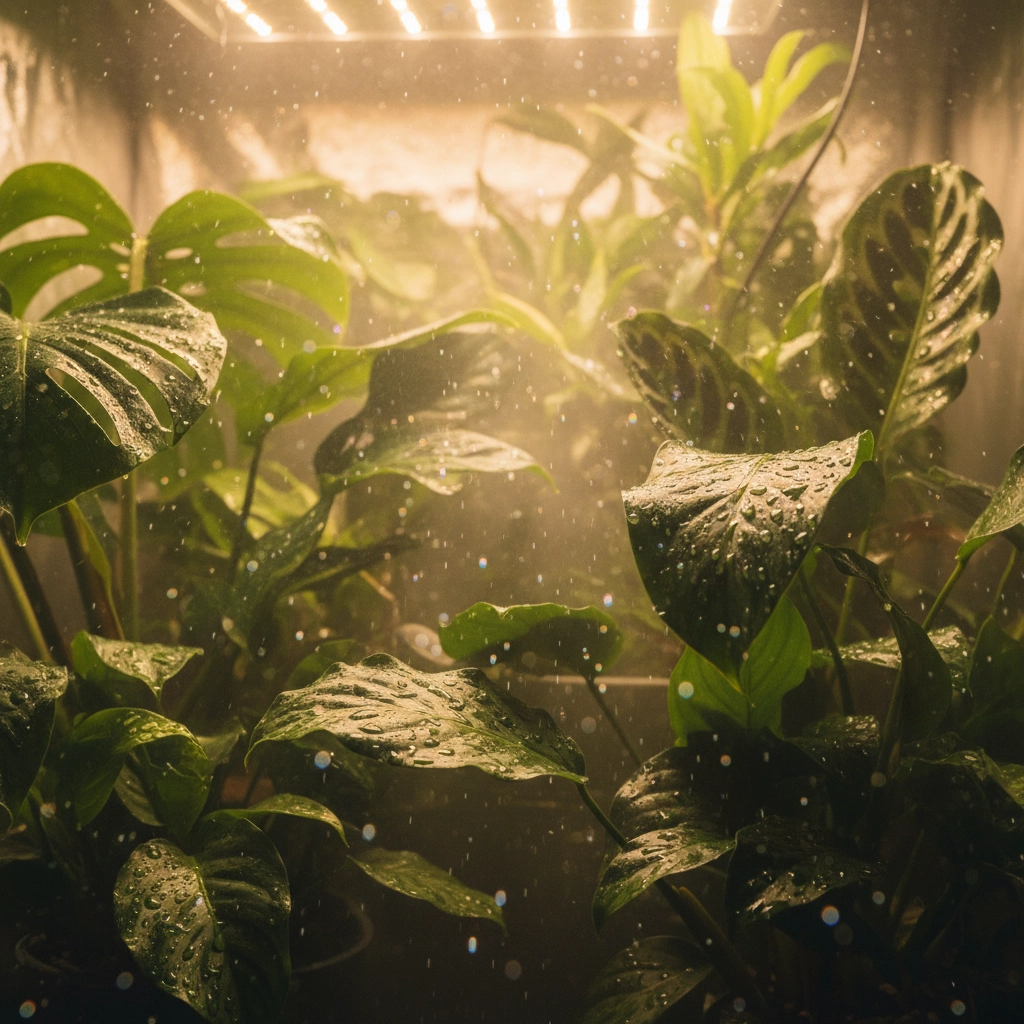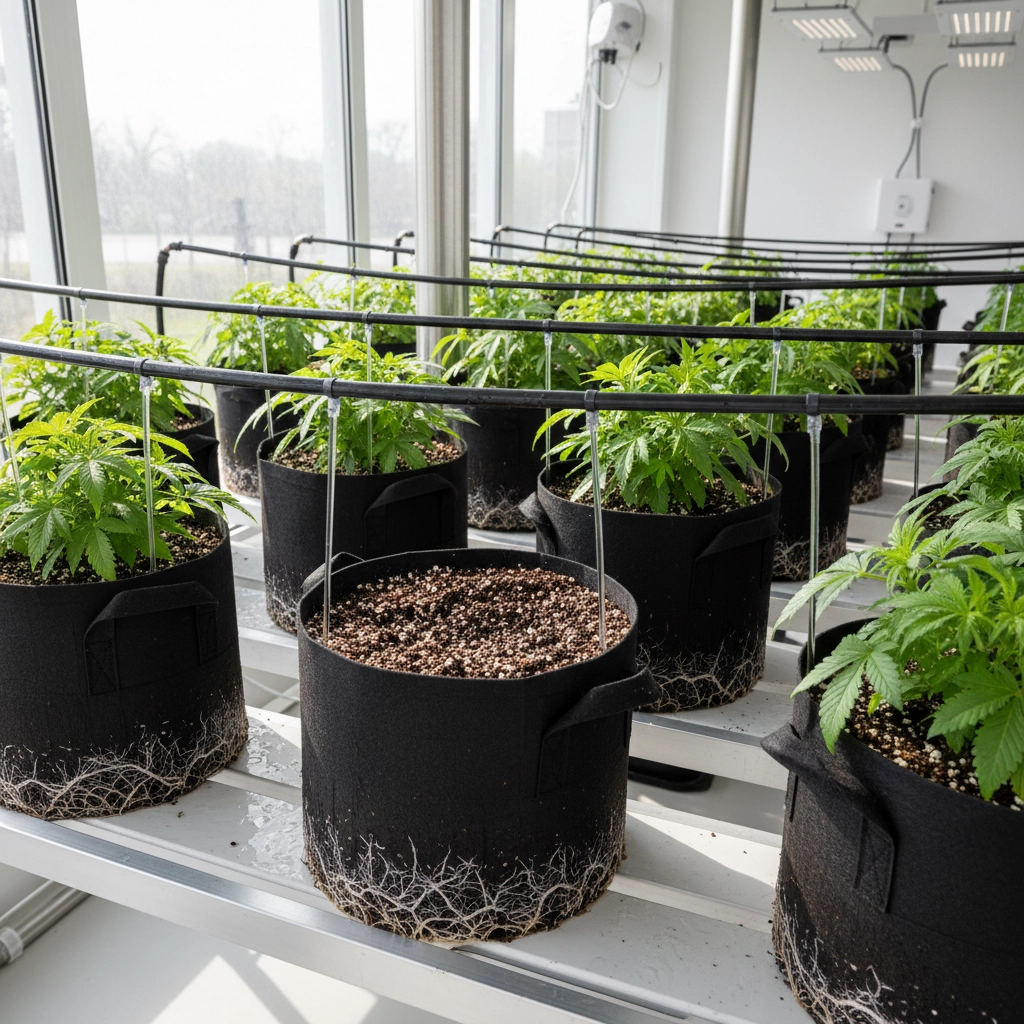Blog
From Roots to Shoots: The Water Cycle Impact on Indoor Gardens
Water is the lifeblood of every indoor garden, making up as much as 95% of a plant's tissue and serving as the highway for nutrients, sugars, and essential compounds throughout the entire plant structure. But in indoor growing environments, managing this water cycle becomes far more complex than simply turning on a garden hose. Unlike outdoor gardens where nature handles the heavy lifting, indoor gardeners must understand and control every aspect of water movement: from soil absorption to atmospheric humidity.
The water cycle in your indoor garden isn't just about keeping plants hydrated. It's an intricate system that affects everything from nutrient uptake and photosynthesis to pest prevention and yield optimization. When you grasp how water moves through your plants and growing space, you'll unlock the key to healthier growth, better harvests, and fewer problems down the road.
Understanding Plant Water Absorption
The journey begins at the roots, where your plants are constantly working to pull moisture from their growing medium. This isn't just about quenching thirst: water acts as the primary transport mechanism that carries dissolved nutrients from areas of high concentration in the root zone to areas of lower concentration throughout the plant.
Root systems function like sophisticated pumps, creating negative pressure that draws water upward through the plant's vascular system. This process, called transpiration pull, works in conjunction with root pressure to move water and nutrients from the growing medium all the way to the topmost leaves and growing tips.

The type of growing medium you choose directly impacts how efficiently your plants can access water. Traditional soil retains moisture longer but can become waterlogged, while hydroponic systems provide more precise control but require constant monitoring. The key is maintaining consistent moisture availability without creating anaerobic conditions that lead to root rot.
Different plant species have varying water absorption rates and preferences. Leafy greens typically require steady moisture levels, while fruiting plants may benefit from slight dry periods between waterings to encourage deeper root development and concentrate flavors.
The Transpiration Process and Its Environmental Impact
Once water enters the plant through the roots, it travels upward through the stems and eventually exits through tiny pores called stomata on the leaf surfaces. This process, known as transpiration, serves multiple critical functions beyond simple water movement.
Transpiration acts as the plant's cooling system, preventing overheating under intense grow lights. As water evaporates from leaf surfaces, it creates a cooling effect similar to how sweating cools the human body. This is particularly important in indoor environments where artificial lighting can generate significant heat.
The stomata that release water vapor also facilitate gas exchange for photosynthesis. During daylight hours, these pores open to allow carbon dioxide in and oxygen out, while simultaneously releasing water vapor. This dual function means that water management directly affects your plant's ability to photosynthesize and produce energy.
In closed indoor growing systems, transpiration rates typically range from 1 to 10 liters per square meter per day, depending on environmental conditions like temperature, humidity, and air circulation. Understanding these rates helps you predict how much water your plants will consume and how much humidity will be added to your growing space.
Humidity Control and Environmental Balance
Indoor gardens operate as essentially closed ecosystems, meaning the water that evaporates from your plants doesn't disappear: it becomes humidity in your growing space. This creates a delicate balance that requires active management to prevent problems.
High humidity can reduce transpiration rates, slowing nutrient movement and making plants more susceptible to fungal diseases. Conversely, low humidity increases transpiration, potentially stressing plants and requiring more frequent watering. The sweet spot for most indoor crops falls between 40-60% relative humidity, though this can vary depending on your specific plants and growth stage.
Temperature works hand-in-hand with humidity to create what's called vapor pressure deficit (VPD): the difference between how much moisture the air can hold versus how much it actually contains. Optimizing VPD encourages healthy transpiration rates and robust plant metabolism.

Proper air circulation becomes crucial in managing this moisture balance. Gentle airflow helps move humid air away from leaf surfaces, promoting healthy transpiration while preventing stagnant conditions that favor disease development. Oscillating fans or ventilation systems should create movement without creating wind stress on your plants.
Smart Irrigation Strategies for Indoor Gardens
Watering technique in indoor gardens requires a completely different approach than outdoor gardening. The goal is to encourage deep, healthy root development while maintaining optimal soil moisture levels throughout the growing cycle.
Deep, infrequent watering generally produces better results than frequent, shallow watering. This technique encourages roots to grow deeper into the growing medium, creating more resilient plants that can better handle environmental fluctuations. When you water, saturate the entire root zone thoroughly, then allow the top inch or two to dry before watering again.
The timing of watering also affects plant health and growth patterns. Watering early in the light cycle gives plants access to moisture during their most active growth periods, while late-day watering can increase humidity overnight when transpiration rates are naturally lower.
Water quality plays a crucial role in indoor garden success. Tap water often contains chlorine, chloramines, or excessive mineral content that can interfere with nutrient uptake. Using a quality water conditioner like Drops of Balance can help optimize your water's pH and mineral content for better plant absorption.
Container choice significantly impacts irrigation efficiency. Fabric pots provide excellent drainage and air pruning of roots, while preventing the waterlogged conditions common with plastic containers. The increased airflow through fabric walls also helps regulate moisture levels in the root zone.
Optimizing Water Management Systems
Creating an efficient water management system requires understanding the interconnected relationships between watering, humidity, temperature, and air circulation. Start by monitoring your plants' daily water consumption patterns, which will vary based on growth stage, environmental conditions, and plant size.
Automated systems can help maintain consistency, but they require careful calibration and regular monitoring. Simple mechanical timers can control pumps or misters, while more sophisticated controllers can integrate multiple environmental factors.

Drainage is just as important as water delivery. Excess water must have somewhere to go to prevent root rot and salt buildup in growing media. Proper drainage also helps flush accumulated salts from fertilizers, preventing nutrient lockout and maintaining healthy root zone conditions.
Consider implementing a recirculating system for hydroponic setups, which conserves water while maintaining precise control over nutrient delivery. These systems require careful monitoring of pH and electrical conductivity (EC) as plants consume water and nutrients at different rates.
Troubleshooting Common Water-Related Issues
Overwatering remains one of the most common problems in indoor gardens, often manifesting as yellowing leaves, slow growth, and eventually root rot. The key is distinguishing between soil moisture and plant water needs: just because soil feels dry on top doesn't mean the root zone needs water.
Underwatering typically shows up as wilting, leaf curling, and brown, crispy leaf edges. However, these symptoms can also indicate other problems like excessive heat or low humidity, so consider all environmental factors when diagnosing plant issues.
Water quality problems often appear as nutrient deficiencies, even when feeding schedules seem adequate. Hard water with high mineral content can lock out certain nutrients, while soft water may lack essential trace elements. Regular water testing and appropriate conditioning can prevent many of these issues.
Humidity-related problems frequently surface as pest issues or disease pressure. Spider mites thrive in low humidity environments, while fungal problems prefer high humidity conditions. Maintaining proper moisture balance in both soil and air creates an environment that favors healthy plant growth over pest and disease development.
Creating Your Water Cycle Management Plan
Successful indoor water management starts with understanding your specific growing environment and plant requirements. Begin by establishing baseline measurements for temperature, humidity, and soil moisture levels throughout a typical day-night cycle.
Develop consistent watering schedules based on your plants' consumption patterns rather than calendar dates. Most indoor gardens benefit from checking soil moisture daily but watering only when needed, which might be every 2-4 days depending on plant size, container type, and environmental conditions.
Monitor and adjust environmental factors as your plants grow and seasons change. Larger plants transpire more water, requiring adjustments to humidity management and watering frequency. Similarly, changes in outdoor weather can affect indoor growing conditions, especially in spaces without climate control.
The water cycle in your indoor garden represents a complex but manageable system that, when properly understood and controlled, becomes the foundation for healthy, productive plants. By focusing on the interconnected relationships between absorption, transpiration, humidity, and irrigation, you'll create an environment where your plants can thrive while avoiding the common pitfalls that plague many indoor growing operations.
Remember that every growing space is unique, and what works perfectly in one setup may need adjustment in another. The key is understanding the principles behind water movement and plant physiology, then applying that knowledge to optimize your specific growing conditions.
Mark
